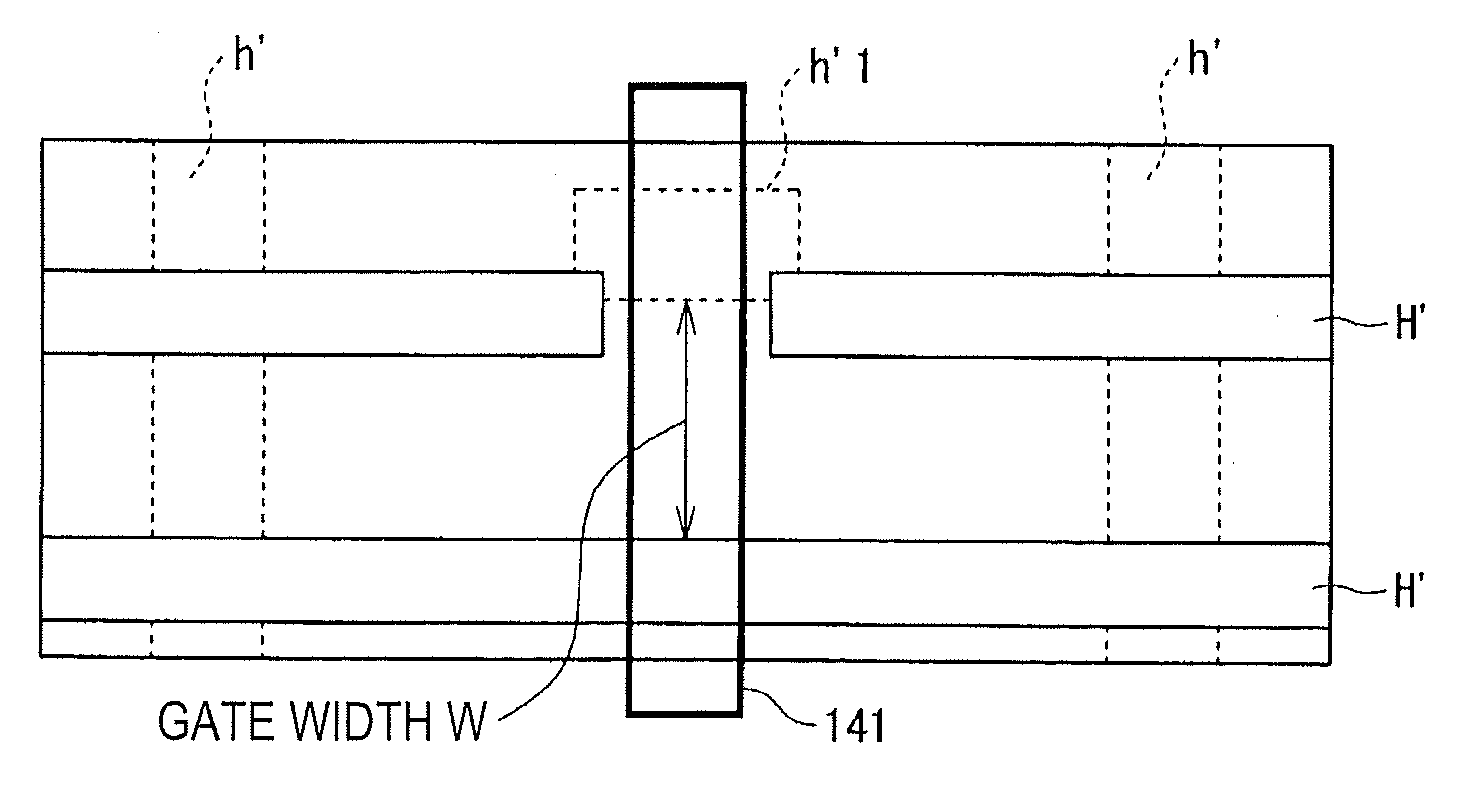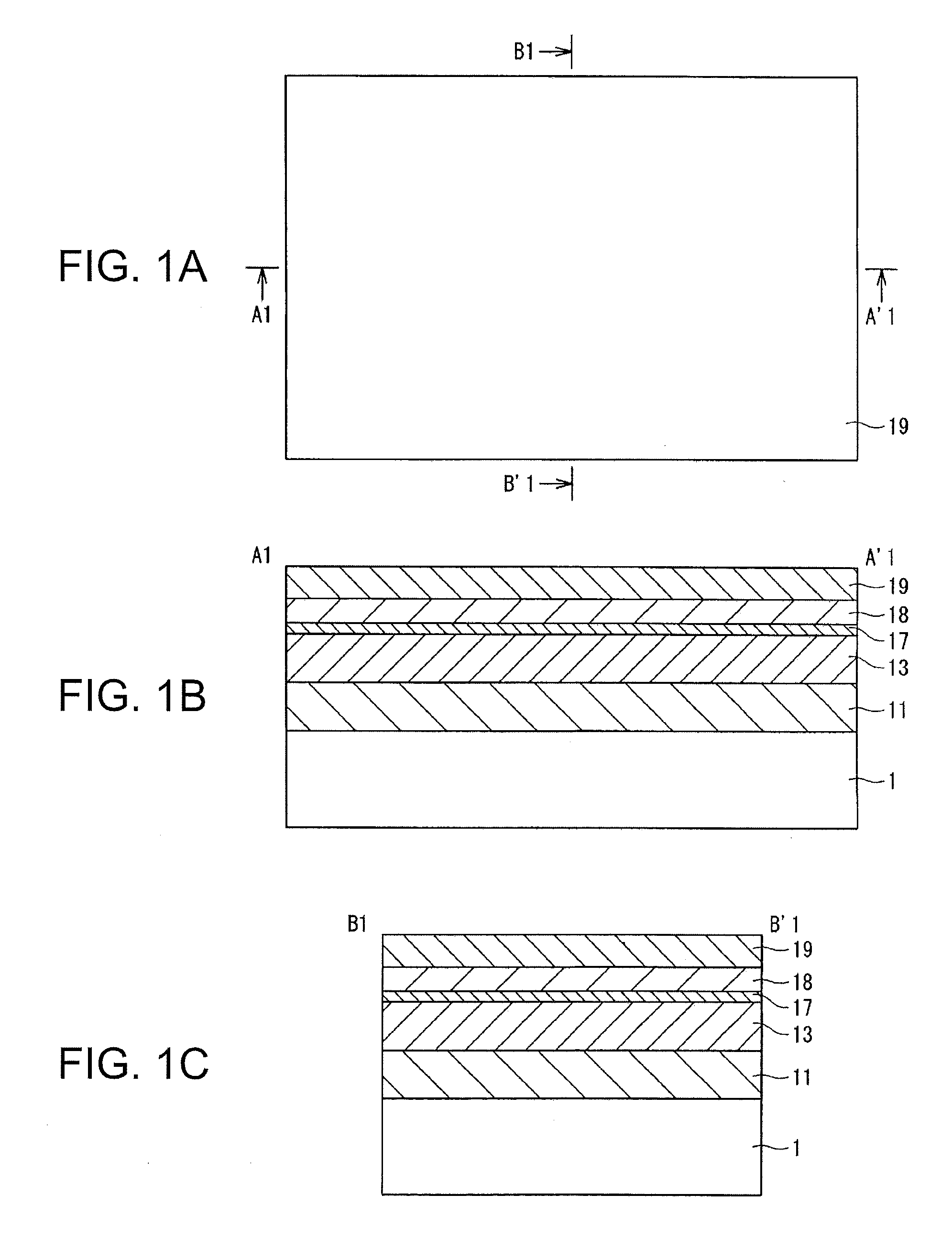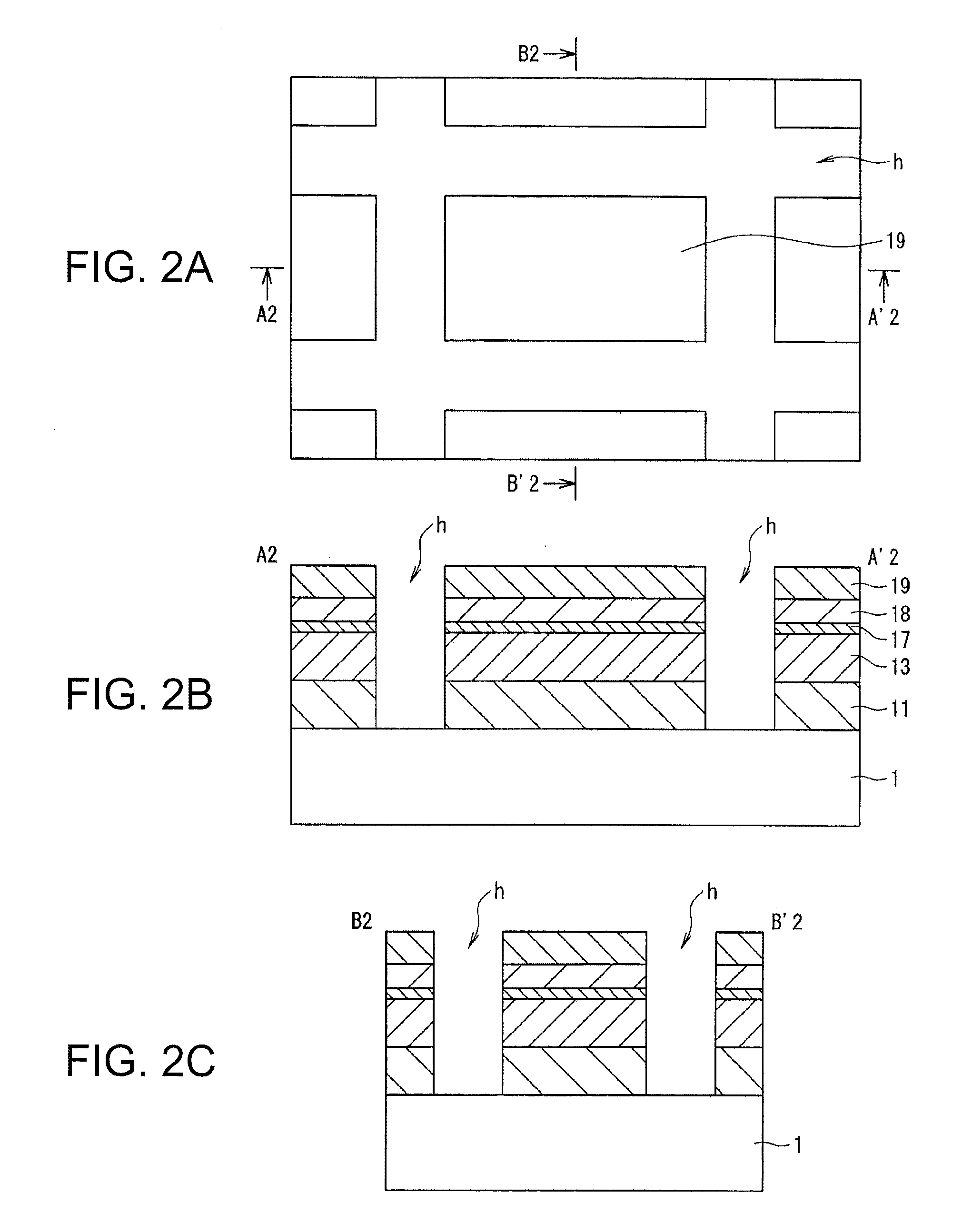Method for manufacturing a semiconductor device
a manufacturing method and semiconductor technology, applied in semiconductor devices, semiconductor/solid-state device testing/measurement, instruments, etc., can solve the problem of complicated configuration of element regions from a plain view, and achieve the effect of reducing the variation of area and configuration of soi layers, reducing misalignment of locations, and reducing the fluctuation of area and configuration
- Summary
- Abstract
- Description
- Claims
- Application Information
AI Technical Summary
Benefits of technology
Problems solved by technology
Method used
Image
Examples
first embodiment
[0034]FIG. 1 to FIG. 9 show a method of manufacturing a semiconductor device of a first embodiment of the invention. FIG. 1A to FIG. 9A are plain views, FIG. 1B to FIG. 9B are cross sections along the lines A1-A1′ to A9-A9′ of FIG. 1A to FIG. 9A, and FIG. 1C to FIG. 9C are cross sections along the lines B1-B1′ to B9-B9′ of FIG. 1C to FIG. 9C.
[0035]First, as shown in FIGS. 1A to 1C, a mono crystalline silicon buffer layer not shown in the figure is formed on a Si substrate 1, then, a mono crystalline silicon germanium (SiGe) layer 11 is formed on it, further, a mono crystalline silicon (Si) layer 13 is formed on it. These Si buffer layer, Si Ge layer 11 and Si layer 13 are continuously grown by an epitaxial growing method, for example. Next, a SiO2 layer 17 is formed on an entire surface of the Si substrate 1, a silicon nitride (Si3 N4) layer 18 is formed on it and further, a SiO2 layer 19 is formed on it. These SiO2 layer 17, (Si3 N4) layer 18 and SiO2 layer 19 are formed by CVD.
[00...
PUM
 Login to View More
Login to View More Abstract
Description
Claims
Application Information
 Login to View More
Login to View More - R&D
- Intellectual Property
- Life Sciences
- Materials
- Tech Scout
- Unparalleled Data Quality
- Higher Quality Content
- 60% Fewer Hallucinations
Browse by: Latest US Patents, China's latest patents, Technical Efficacy Thesaurus, Application Domain, Technology Topic, Popular Technical Reports.
© 2025 PatSnap. All rights reserved.Legal|Privacy policy|Modern Slavery Act Transparency Statement|Sitemap|About US| Contact US: help@patsnap.com



